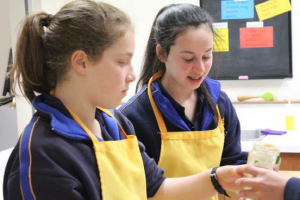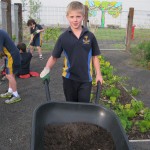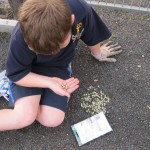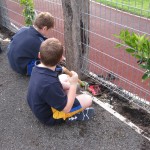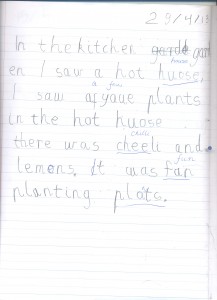_________________________________________________________________________
Youngster digs in – the importance of understanding and creating connecting with remote indigenous communities
http://www.theage.com.au/national/education/youngster-digs-in-20130310-2ftrr.html

_________________________________________________________________
Purim
Purim is a highlight of the Bialik College calendar. This year, our Purim celebrations at the College will be held on Monday 25 February for all students from Kindergarten to Year 12. We have spent a great deal of time ensuring that the day will be fun-filled and meaningful for all Bialik students. Our specific focus will be on fulfilling the four mitzvot of Purim.
• Mishloach Manot: each student in the school will prepare a special edible gift to be exchanged with a classmate.
• Matanot Le’evyonim: students will prepare a special gift for the needy in our community, namely Dandenong West Primary School, Asylum Seekers Resource Centre, FareShare and Ardoch Youth Foundation.
• Seudah: as always our fantastic Parents’ Association will prepare a delicious BBQ feast.
• K’Riat Megillah: all students will hear the story of Purim being read.
Many students enjoyed baking Hamantashen, designed to look like the triangular hat that the villain of the Purim story, Haman wore.
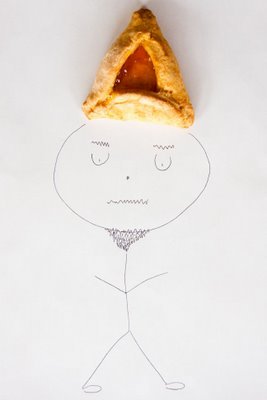
_________________________________________________________________________
Israel Balagan Week 26-30 August
This week, students celebrated ‘Israel Balagan Week’, an annual celebration of Israeli culture. Throughout the week students explored various elements of Israel, looking at the landscape, culture, the future of Israel and more.
To complete the week the Mazkirut (Year 12 leaders) made Rugelach, Borekas, Falafel and Slushies which created a ‘Shuk’ (Israeli market) atmosphere at school. Selling the food
Proceeds from selling the food was a donation to Neve Michael Children’s Village, an Israeli organization with which Bialik has built a relationship over the past few years.
Neve Michael’s mission is to create a family-like atmosphere for their children, to provide them with the best therapeutic care, develop their young minds, and mold them into young adults. Neve Michael helps children overcome their family misfortunes, restores their capacity for normal physical, emotional, and educational development and guides them towards a better future.

_________________________________________________________________________
Year 3 Maths Extension
Stage 1 –
A few weeks ago we measured the perimeter of the 
kitchen garden. A perimeter is a measurement of edges around a space. We used meter sticks and measuring wheels. At the end we found out the perimeter of the kitchen garden is 118.75 meters or 118 meters and 75 centimetres.
Each group got different measurements of the edges, so our next step was to find the average. The average is when you get all of the results and add them together and divide by the number of results.The average is the nearest number that all of the results are closest or fall near.
The question that we have been focusing on.If we had 82 meters of wood, what could our perimeters look like??
We have noticed that if you have shapes that are common like rectangles, squares and triangles, you would have the same perimeter as 82 but the area would be a lot larger than an irregular shape. This is because irregular shapes have more turns, curves and edges and that makes for a smaller inside area. That is what we figured out about this question. Ethan and Daniel
We made an area on a graph paper that had to be exactly 50cm squared. Some students made a rectangular shape. The edges measured 5cm by 10 cm…which makes an area of 50 cm squared. The perimeter of these shapes is 30 cm. With irregular shapes we discovered that if they only used a part of the shape that was one square wide, their perimeter would be a LOT bigger. For example, one 50 cm squared shape had a perimeter of 101 cm…almost double the area! Jake and Adam
Stage 2
Teacher Julie invited us to manage an area in the Kitchen Garden. We measured the garden bed and found it was 164 centimetres. We looked at the back of the sweet pea packet and found information about planting these seeds. They needed to be 7.5 cm apart and -5 cm below the surface. We calculated that we could fit 21 seeds in each bed. Our plan for measuring out the seeds along the bed was as follows: Seed, 1=7.5 cm from the edge, seed 2= 15 cm, 3= 22.5 cm, 4= 30 cm, 5= 37.5 cm and so on…
We made the observation that every second number is in the 15’s counting pattern. We also calculated that we needed 84 seeds for all four of our beds. As the seedlings grow, we will collect data and information on our plants. We will continue to keep you posted on our maths discoveries. Please come by the kitchen garden to view our seedlings!Thanks, Joel, Thomas and Dustin
_________________________________________________________________________________________________
7C have been studying the difference between a myth
and legend – the important difference is the story’s relationship to the truth
In small groups students considered 7C to be an indigenous Bialik community and each created and performed a “dreaming” that described/explained:
1. How the physical landscape of Bialik came to be (including sacred sites)
2. The ancestry of 7C
3. The rules/laws of 7C
The secreted sites were around the frog bog and kitchen garden, and hence where each different “dreaming” was presented a as an oral storytelling. Please enjoy these videos (you may need to turn the volume up) –
[KGVID width=”640″ height=”360″]https://elearning.bialik.vic.edu.au/kitchengarden/wp-content/uploads/2013/06/MOV00718.avi[/KGVID]
Post task reflections by 7C –
Jordan Ben-Eli
This term, we started looking at Myths and Legends as well as Indigenous story telling. We learned about different forms of story telling, such as speaking, dancing, performing, singing, and many other interesting ways. We got to make our own myth, based on Indigenous stories… We performed at the frog bog, so we tried to incorporate the area into our story. I think this was a great project, and a great topic to learn about. I learned a lot, and I found it really fun to make my own myth.
Dion Fibishenko
I created my characters based upon schools and high charted people in this school. Jeremy our principle was the guardian that hatched the egg to create the land, and Zack was the leader of the tribe (6B). Bialik was the life inside the egg. I think I did a pretty good job.
Dahlia Raiter
I think that this was a great way to explore the different and many way of how different communities and countries tell stories to their loved ones and friends. I believe that this was a great way to learn things, I would love to do this again with the class and I really did learn a lot about the Aboriginal dreaming.
_____________________________________________________________
1R student reflection’s from their exciting visit to the
Kitchen Garden
The students were particularly e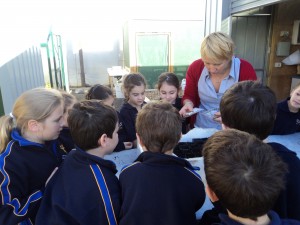 xcited to see and feel the many worms in the worm farm. They enjoyed smelling the flowers and trying the many herbs. Garden Educator Julie explained why the Orange Bellied Parrots are on the brink of extinction. They have been ranked as one of the world’s rarest and most endangered species!
xcited to see and feel the many worms in the worm farm. They enjoyed smelling the flowers and trying the many herbs. Garden Educator Julie explained why the Orange Bellied Parrots are on the brink of extinction. They have been ranked as one of the world’s rarest and most endangered species!
Students planted Bidgee Widgee seeds because the Orange Bellied Parrots love this shrub. When the plants a mature enough, 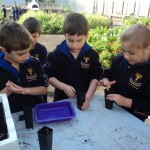 students will take cuttings from these plants to Healesville Sanctuary to feed the parrots that are part of the sanctuary’s breading program.
students will take cuttings from these plants to Healesville Sanctuary to feed the parrots that are part of the sanctuary’s breading program.

